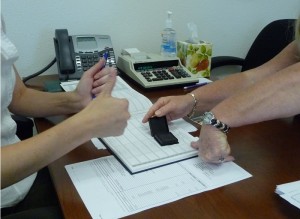Thanksgiving is the right time for me to acknowledge all the great people that I get to work with. Every Sonoma County real estate transaction has an abundance of helping hands. Some deal with the clients on both sides of the sale. Many more are working as back office professionals assisting with financing, title, insurance, inspections, and other fields. Here’s a sampling of the people in a typical Sonoma County country property sale.
The process starts with a property owner with a home or raw land they want to sell. The seller hires a listing broker to sell their property and list it with a multiple listing service. That listing in the MLS is an invitation to other agents and brokers to present offers.
A selling agent represents the buyer who wants to make an offer. Either the agent, or more likely with today’s internet searching, the buyer, locates and identifies the property as being of interest. The selling agent and buyer produce an offer that is submitted to the listing agent for presentation to the seller. When the cycle of offer and counter-offers arrives at a mutually agreed set of terms, the contract becomes ratified and the clock begins. At this point, there are a seller and a buyer, the two most important actors by far, and a listing agent and selling agent, each of whom may have at least one or more co-agents, and who is typically working on behalf of a real estate broker.
Each agent working at a typical brokerage will have a support staff for transactions that can include transaction coordinators to manage paperwork flow and completion and general office assistance to keep the lights on, copies made, faxes monitored, phones answered, etc. You should visualize at least one administrative person on each side of the transaction.
Once the contract is agreed to, the document and earnest money deposit is provided to the escrow/title company to hold the funds and open an escrow. The escrow process will produce a preliminary and final title report, handle all the funds for the transaction, manage the paperwork and record the deed in the buyer’s name at the completion of the transaction (COE or Close of Escrow). For simplicity, we’ll just call out an escrow officer to handle the paperwork and a title officer to assemble all the documents needed to provide clear title to the buyer.
While the title officer gets busy with researching deeds, easements, and other recorded documents, the buyer’s lender is getting started with loan paperwork. Staying with the simplest model, there is the loan originator, that’s the person the buyers deal with on a personal basis, either over the phone, via email, or in a meat meeting. They will typically have a processor that helps to get the masses of documentation in place. Farther up the decision chain is the underwriter who assembles all the facts of income and credit to make a decision based also on the work product of yet another person, the appraiser, who evaluates what the property is worth.
Running on a parallel track with title and lending is the process of due diligence. That’s a period for careful investigation of property conditions by the buyer. Each property may require a different set of inspectors, but for country property it’s not unreasonable for a buyer to use a general building inspector, a septic inspector, a well inspector, a pest inspector, a surveyor, a geotechnical engineer, and more.
Before COE, the current owner’s bank representative has to get involved by issuing a demand for the monies they are owed. So does any other lien holder who has a lien against the property being sold. That often includes property taxes, so the assessor’s office has to submit a demand letter as well. At the end of the process is the signing. In Sonoma County that typically involves separate meetings with the escrow officer for buyers and sellers.

A notary to document that signatures are genuine is required for loan and other documents. Often that is the escrow officer doing notary duty, but for many transactions a traveling notary is simpler for everyone. All documents in place, money in hand, loans and commissions ready to be paid off, the buyer’s deed travels to the County Recorder where the documents are officially entered into the record and the buyer becomes owner. By my count, that’s about 30 people. Every transaction.
You may see a single agent’s face plastered on a billboard, but every property transaction is a team effort. So, thanks to Nancy, Jen, Don, Byron, Eric, Heather, Dan, and all the rest I don’t have space to name. You make my job possible…and fun.